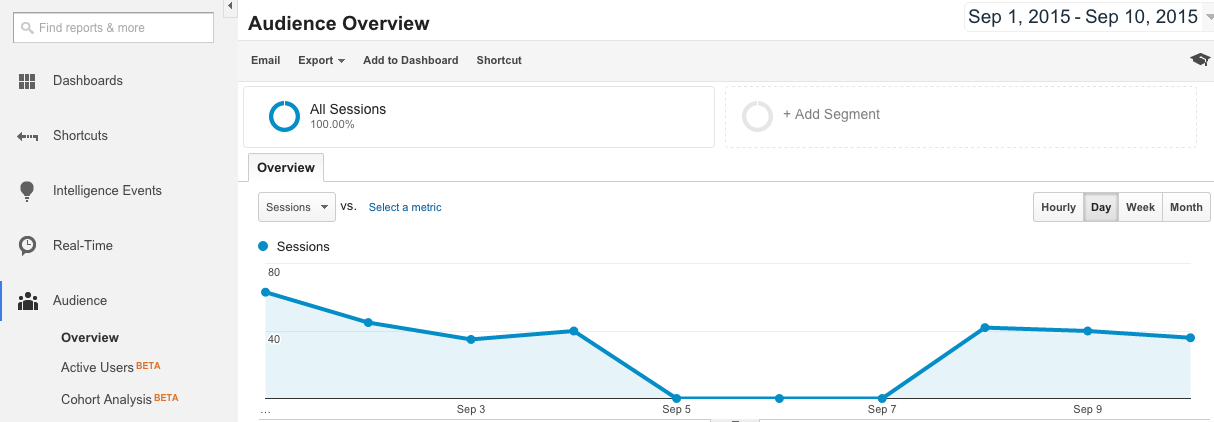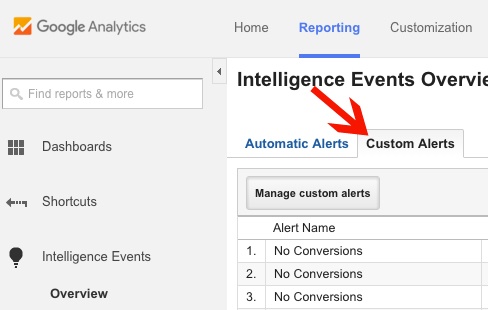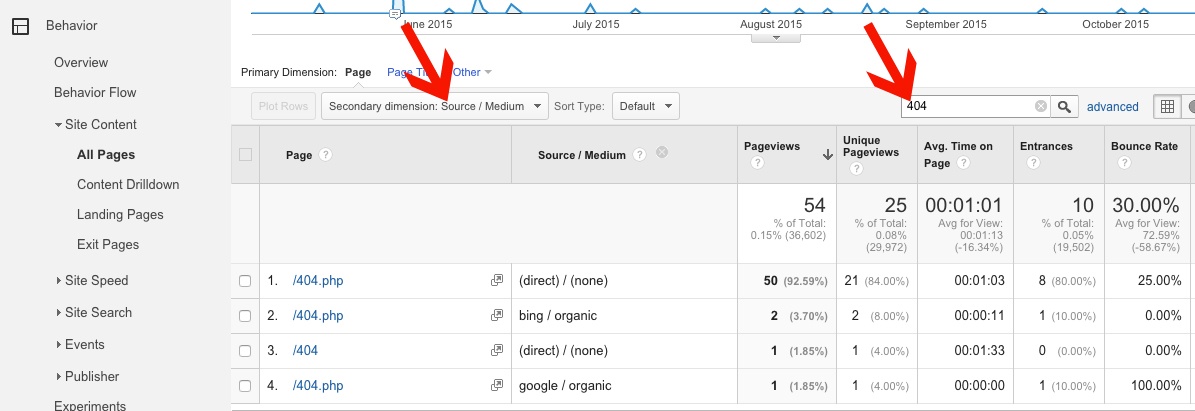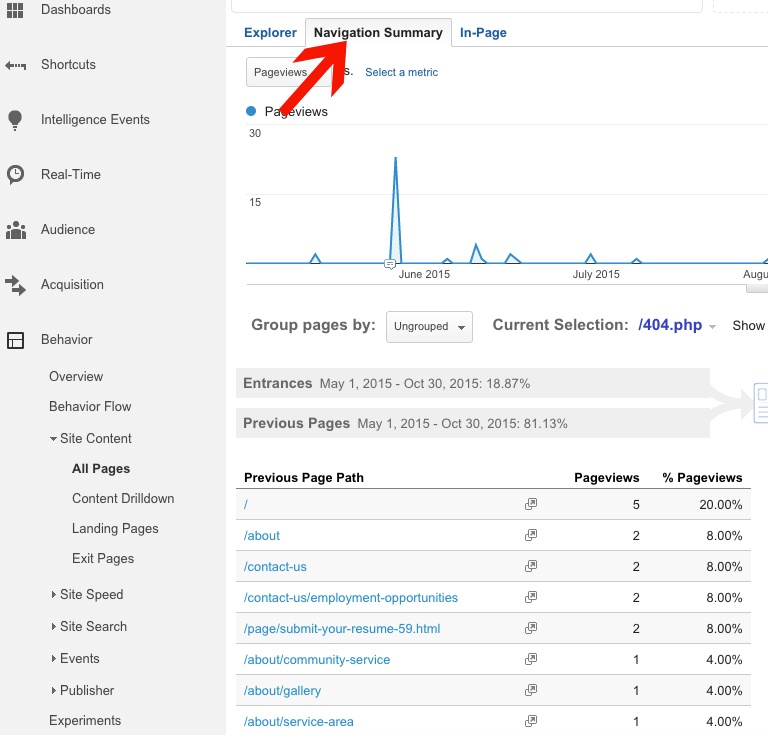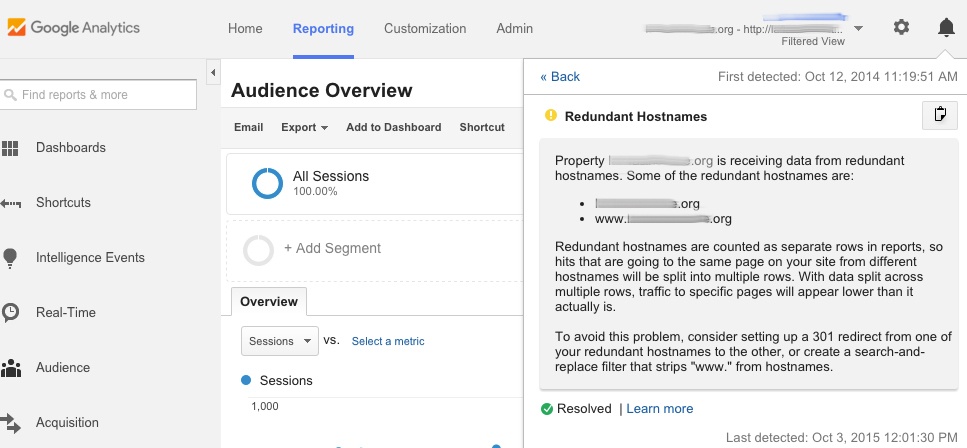May 20, 2024
Identifying Site Errors with Google Analytics
By Megalytic Staff - November 19, 2015
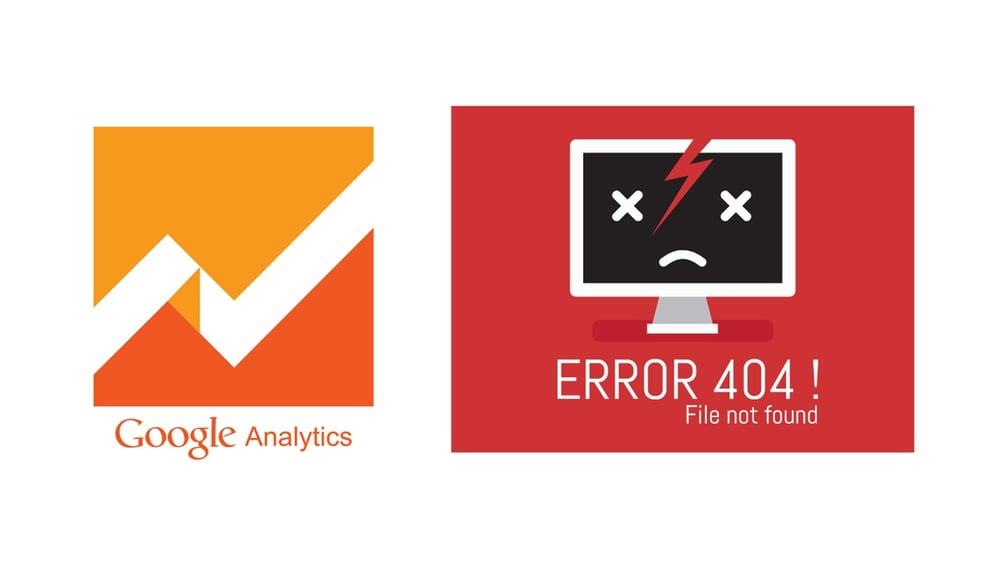
Identify Sudden Traffic Drops
As you look at data over time, pay attention to sudden downward spikes in your site traffic. A stark or complete drop-off in visits could indicate that your site went down entirely or is not functioning properly. If you regularly receive 100 Sessions each day, and those suddenly drop to zero, something is definitely wrong.
When you see an unexplained drop-off in traffic, you should see, first of all, if it was a complete lack of traffic or simply a lower number of Sessions than normal. If you see that zero Sessions occurred on your site within a timeframe, that may be a sign that the site went down completely. This example shows a graph indicating that the site received no Sessions for three days.
Based on this data, you can then do further research to see if the site actually went down, or if people were blocked from accessing it. If you aren’t aware of a specific reason why the site stopped receiving traffic, check with your web developer or hosting company for any insight into the drop. Servers may have gone down, registration may have expired or your site may have been hacked. Onsite issues could include changes that altered or impaired your analytics tracking code.
If you don’t check your analytics daily, you can also set up a custom alert to notify you immediately if traffic drops. In this case, Google Analytics may help you to know right away if your site has gone down by sending an email. Go to Intelligence Events, select the Custom Alerts tab, and click “Manage Custom Alerts.”
Next, click “New Alert.”
Here, you can customize your alert to notify you if no Sessions occur in a day. Choose the Analytics View you’d like to apply the alert to. Next, check the box to send you an email when the alert triggers.
Finally, set up your alert parameters. Choose Sessions from the dimension dropdown and “Is less than” from the Condition dropdown. Finally, enter “1” as the value. This alert will now trigger when Sessions are less than 1 (i.e., no visits to the site) for a day. You can set higher values to be notified of any steep, if not total, traffic drops as well. Once you’re set up, you’ll receive an email. You can also set up alerts for mobile to receive text message alerts of any issues.
Look for 404 Page Sessions
404 pages indicate a user tried to access a page that could not be found. As URLs for error pages can vary, you may want to check to see what URL your site uses for these pages. Many contain “404” in the URL (e.g., example.com/404 or example.com/404.php). Go to the All Pages report (Behavior > Pages > All Pages) and search for “404” to see how many times people hit an error page in the timeframe you’re viewing.
To further analyze how these visits to error pages occurred, you can segment by source using the Secondary Dimension dropdown. In our example, we’ve applied a secondary dimension of Source/Medium. We can see that most of the visits to 404 pages came from Direct visits, with a few from organic search. A high volume of visits to error pages from organic search could indicate that old URLs are ranking when they should have been either taken down, unlinked, or redirected to new URLs.
You can also look at how people arrived on these error pages from within the site by clicking the 404 page URL and viewing the Navigation Summary. This will show you the pages people looked at immediately before getting to the 404 page, as well as what pages they looked at next.
Reviewing the URLs listed under “Previous Page Path” can help locate pages containing broken or outdated links, where the user clicked a link expecting to go to a live page but ended up on the 404 page instead.
If analytics data leads you to suspect links may be broken, you can use a free tool like Screaming Frog to scan your entire site for broken links that you or your developer can fix.
Watch Your Notifications
Google Analytics will show you notifications warning about possible errors in how people are accessing your site. You’ll see these appear in the “bell” in the upper right of the screen. For more details on understanding these messages, see our article on understanding common Google Analytics notifications . Some of these relate to errors in your site’s setup, which could impact both user experience and SEO factors.
A “redundant hostnames” warning, one common message, indicates that people are accessing the same page on URLs both with and without “www.” For instance, people can get to both example.com and www.example.com, but they’re actually accessing two versions of the same page. This issue can cause problems for SEO, as Google can potentially see the www and non-www versions of the site as duplicate content.
To fix this error, you’ll need to set up your domain to default to either the www or non-www version. You can do this through your domain provider, or work with a developer to help you get this set up. You can also choose one version of the entire domain, with or without the www as the canonical version of your site and 301 redirect the non-canonical version into your preferred one.
Another common notification alerts you to a drop in conversions over the past seven days. While this alert may simply indicate you’ve received no form submissions (assuming you’ve set up Analytics Goals to track forms ), it could also indicate problems with the form on your site. Perhaps a WordPress plugin update broke the form, so it no longer submits properly. When you see no submissions from a form that was regularly receiving activity, test the form to confirm whether or not it is working properly.
While not all notifications indicate legitimate errors on your site, they can serve as red flags for you to double-check for problems in specific areas. Review these notifications and ensure that you promptly identify and correct any errors on your site that may be related.
Conclusion
Reference Google Analytics regularly not just for traffic updates but to flag possible errors on your site. Whether you’re a marketing director or a web developer, analytics data can be extremely helpful to let you know when users are experiencing usability or technical problems with your site.
Besides reviewing reports and notifications in your account, be sure to set up custom alerts to help you know right away if your site has gone down. Google Analytics can serve as the front line of defense to immediately let you know when errors occur.

